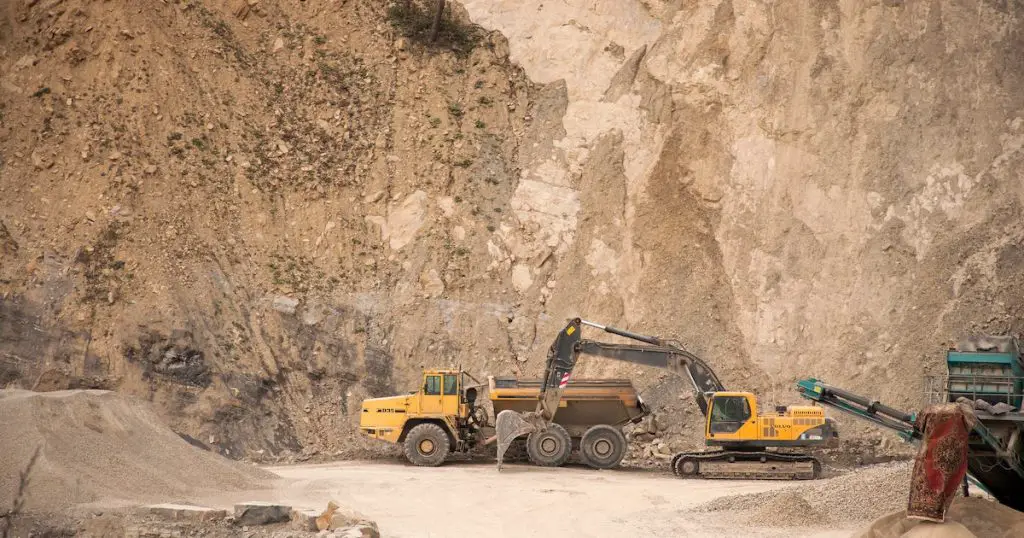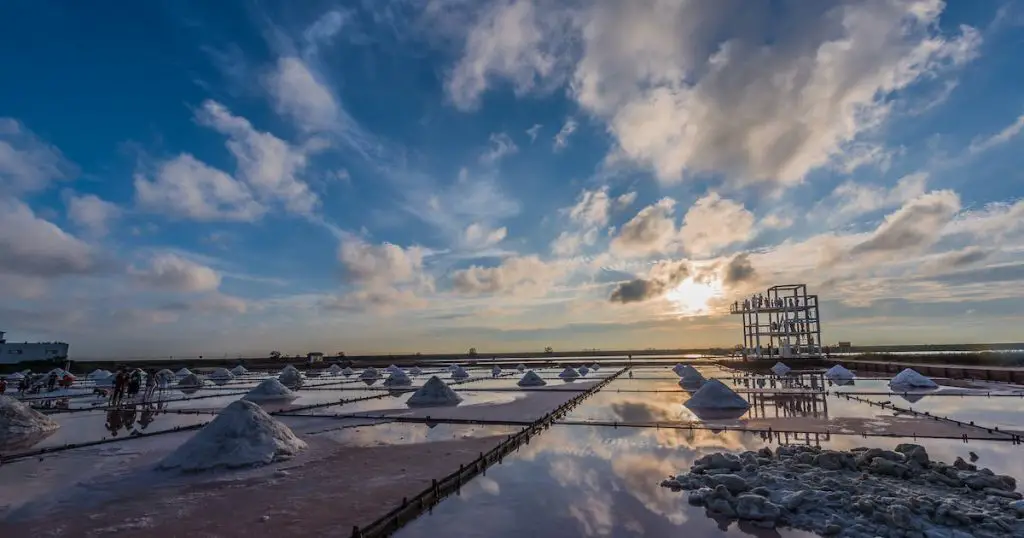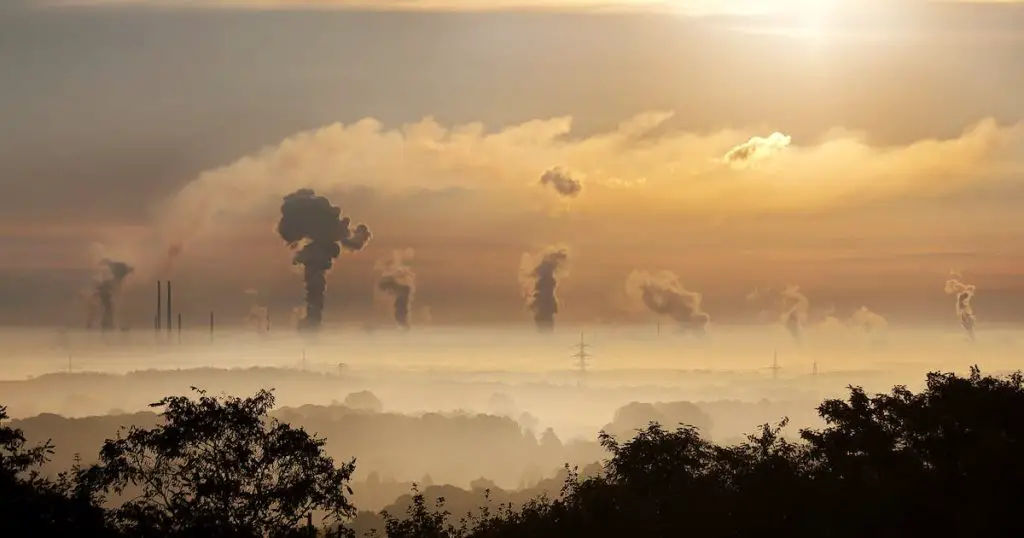Prescott, a town with deep historical roots, has witnessed vast geological evolutions over the years. Predominantly, it’s the mining activities that have underpinned these transformations.
From subtle shifts in the terrain to more pronounced changes in the landscape, the story of Prescott’s geological changes due to mining activities is truly captivating. As Smithsonian Magazine details, many American towns underwent similar transformations, but Prescott’s journey stands out.

Early Mining Activities and Their Geological Significance
The relationship between Prescott and mining traces back centuries, marking significant chapters in the town’s development. Initially, the allure of the Gold Rush led many to Prescott.
Early miners, equipped with basic tools and immense determination, reshaped vast tracts of the landscape. As HistoryNet notes, these miners, while keen on extracting wealth, inadvertently set the stage for long-term geological alterations.
Simple manual extraction techniques, prevalent during this period, might seem primitive by today’s standards, but their impact on the land was profound. Large amounts of earth were moved, and over time, this led to a domino effect on the region’s geology.
Major Minerals and Ores Mined in Prescott
Prescott’s vast mineral wealth goes beyond gold. A plethora of minerals have been extracted from its depths, each contributing to its geological narrative.
Gold: The Golden Era – This era remains etched in Prescott’s history. While gold extraction methods, such as placer and hard rock mining, brought prosperity, they also disrupted underground rock structures. According to Geology.com, such disruptions can have long-term effects on a region’s stability.
Silver: The Lustrous Legacy – Silver, though not as abundant as gold, played its part. Mining operations delved deep, altering the underground landscapes. An article on Mining Weekly expounds on the global impact of silver mining.
Copper and Other Minerals: Unsung Heroes – Beyond the glitter of gold and silver, copper, lead, and zinc made silent but significant contributions to Prescott’s economy.
Their extraction, often overshadowed, also played a role in the town’s evolving geology, as highlighted by the Minerals Education Coalition.
Mining Methods and Their Geological Footprints
Prescott’s geology narrates tales of the diverse mining methods that have left their mark over time.
Surface mining, predominant in the early days, stripped vast expanses of the topsoil. Although it was an efficient approach, it left behind unmistakable scars on the landscape. The effects of surface mining, both ecological and geological, are well documented by USGS.
Strip Mining – A method where long strips of soil and rock are removed to unveil the minerals beneath. Each strip, once depleted, becomes a testament to the earth’s alteration. This form of mining leaves elongated terrains of exposed earth, as discussed in a study by Environmental Science & Technology.
Open Pit Mining – Involves carving out vast open areas to access deeper mineral deposits. These cavernous spaces, left behind post-extraction, are a testament to the extent of human intervention in the quest for minerals.

Earthworks delves deeper into the environmental and geological implications of such mining activities.
Water Resources and Hydrological Changes
Mining, by its very nature, interacts profoundly with the earth’s water resources. Prescott’s waterways and underground reservoirs were no exception to the influence of extensive mining operations.
The mining procedures often require substantial water utilization, altering both the quantity and quality of available water in the region. Dewatering processes, which draw out groundwater to keep mines dry, can lower the water table considerably.
This, in turn, affects nearby wells, streams, and ecosystems. WaterWorld has extensively discussed the interplay between mining and groundwater levels across various regions.
The bane of many mining towns, Acid Mine Drainage, is a phenomenon where acidic waters, rich in heavy metals, leach from mines into surrounding water systems. The environmental consequences of this, as highlighted by the Environmental Protection Agency (EPA), are severe.
Water systems contaminated with heavy metals become inhospitable for many forms of life, disrupting entire aquatic ecosystems.
Another hydrological change revolves around the redirection or blocking of surface water flows due to mining infrastructures. Streams and rivers might be diverted, leading to sedimentation and altered flow dynamics. An analysis by National Geographic provides insights into how mining has historically affected water systems globally.
Erosion and Land Degradation
Prescott’s landscapes bear the stories of mining’s long-term effects. Erosion, a natural process, was significantly accelerated by mining activities.
Large areas stripped of vegetation for mining become susceptible to wind and water erosion. Topsoil, the most fertile layer of the earth, gets washed or blown away, leading to land degradation.
This makes it difficult for vegetation to re-establish itself, pushing the land towards desertification. Such issues have been critically evaluated by institutions like the World Land Trust.
Land subsidence, where the ground sinks due to underground voids left by mining, presents another challenge. This can result in the formation of sinkholes or make the area prone to flooding. A comprehensive study on land subsidence by US Geological Survey (USGS) sheds light on its causes and effects.
Seismic Activities: Are They Linked?
One of the lesser-known repercussions of mining is its potential to induce seismic activities. When vast chambers created by mining activities collapse, it can result in tremors known as “mine-induced seismicity.”

While these tremors are generally of lower magnitude compared to natural earthquakes, in populated areas, they can pose significant risks. Research from Seismological Research Letters highlights instances of mine-induced seismic activities across mining regions.
Moreover, the removal or addition of fluids in the mining process can also influence the underground stresses, possibly triggering seismic events. This phenomenon, though rare, demands attention, especially when planning future mining activities in areas with known fault lines.
Preservation and Rehabilitation of Mined Areas
After the rush of mining fades, regions like Prescott are often left grappling with the scars and voids on their landscapes. However, the silver lining lies in the efforts geared towards land reclamation and rehabilitation.
Land reclamation involves restoring the mined areas to a state where they can support ecosystems or, in some cases, human activities once again. Techniques such as backfilling, regrading, and replanting play pivotal roles in this restoration process.
Organizations like Reclaiming Appalachia Coalition exemplify successful reclamation efforts in mining regions.
Moreover, local communities, governments, and environmental organizations have collaborated to revitalize and preserve areas that once echoed with mining activities. These combined efforts ensure that while mining’s legacy is remembered, nature finds its way back.
Economic Implications of Geological Changes
Mining, undeniably, was a significant economic booster for Prescott. However, the consequent geological changes presented a mixed economic bag.
Land devaluation, especially in areas showing evident mining scars or facing issues like land subsidence, posed challenges for real estate development.
Conversely, areas with successful reclamation projects often saw an uptick in land value, as they transformed into recreational or conservation spaces. Economic evaluations by The World Bank offer a perspective on how geological changes can influence regional economies.
Furthermore, the costs associated with environmental clean-ups and water treatment, especially in places affected by Acid Mine Drainage, became economic burdens that often outlasted the profits from mining.
Socio-cultural Impact of Mining on Prescott
Beyond the tangible, the mining era profoundly influenced Prescott’s social fabric and cultural heritage. Mining towns are often melting pots of diverse communities, each bringing its flavor and traditions. Prescott’s multicultural legacy owes much to this mining-induced diversity.
Community tales and narratives, archived by Prescott’s Historical Society, offer a glimpse into the vibrant socio-cultural tapestry woven during the mining days.
Moreover, while mining ushered in prosperity, it also brought challenges. Boomtowns often faced issues like overcrowding, limited amenities, and social disparities. Yet, the spirit of community, collaboration, and resilience shone through, molding Prescott’s unique identity.
Environmental Legislation and Governance
As the repercussions of uninhibited mining became evident, the need for regulations became paramount. Over the decades, both federal and state legislations evolved to ensure responsible mining practices that minimized environmental harm.
Key legislations, like the Surface Mining Control and Reclamation Act (SMCRA), provided frameworks for land reclamation post-mining. The role of agencies like the Environmental Protection Agency (EPA) became crucial in monitoring, enforcing, and guiding sustainable mining practices.
Looking ahead, as the global conversation shifts towards sustainable and green practices, the mining sector’s governance is expected to adapt, ensuring a balance between economic aspirations and environmental well-being.
Modern Mining Techniques and Their Environmental Footprint
While traditional mining methods left undeniable marks on Prescott’s geology, modern techniques are both a continuation and a departure from the past.
Unlike traditional methods that rely on physical extraction, this process uses chemical solutions to extract metals. While it often yields higher metal recoveries, the chemical residues can be an environmental concern. The advantages and challenges of this method are extensively discussed by Mineral Processing & Extractive Metallurgy Review.
In-situ Recovery (ISR):

As a less invasive technique, ISR involves extracting metals by pumping solutions underground and recovering them saturated with the desired mineral.
While this minimizes surface disturbances, it raises questions about groundwater contamination. Mining Technology offers a comprehensive review of ISR’s implications.
Automated and Remote-controlled Operations:
Leveraging technology reduces the need for human presence in potentially hazardous zones. This transition not only enhances safety but also minimizes environmental disturbances by optimizing operations.
The advancements in mining automation have been thoroughly analyzed by Mining.com.
FAQs:
In this section, we will be delving into some of the most common inquiries and curiosities that surround our topic.
What sparked the mining boom in Prescott?
The discovery of gold and the ensuing Gold Rush were the primary catalysts for the mining boom in Prescott.
How has mining-induced water contamination been addressed?
Efforts range from treating Acid Mine Drainage to implementing stricter regulations on waste disposal. Organizations like the EPA have been at the forefront of such initiatives.
Are there any active mining operations in Prescott today?
While large-scale operations have dwindled, there are still some smaller, localized activities, and efforts are geared toward ensuring they adopt sustainable practices.
What are the major challenges in rehabilitating mined lands?
Challenges include restoring soil fertility, managing erosion, ensuring water quality, and re-establishing local flora and fauna.
How has the community participated in post-mining land reclamation?
Local communities have played pivotal roles, from grassroots activism to participating in restoration projects, ensuring that the reclaimed lands are put to beneficial use.
Conclusion: Prescott’s Geological Changes Due to Mining Activities
Prescott’s journey through the epochs of mining is both a tale of human ingenuity and nature’s resilience. The vast geological shifts, mirrored by the town’s socio-economic and cultural evolution, paint a multifaceted picture.
While the echoes of the mining past are still palpable, the strides towards a sustainable future, grounded in lessons from history, are equally evident.
As the town stands today, amidst the geological tapestry woven by centuries of mining, it serves as a testament to the delicate balance between human aspirations and environmental stewardship.



Leave a Comment
You must be logged in to post a comment.